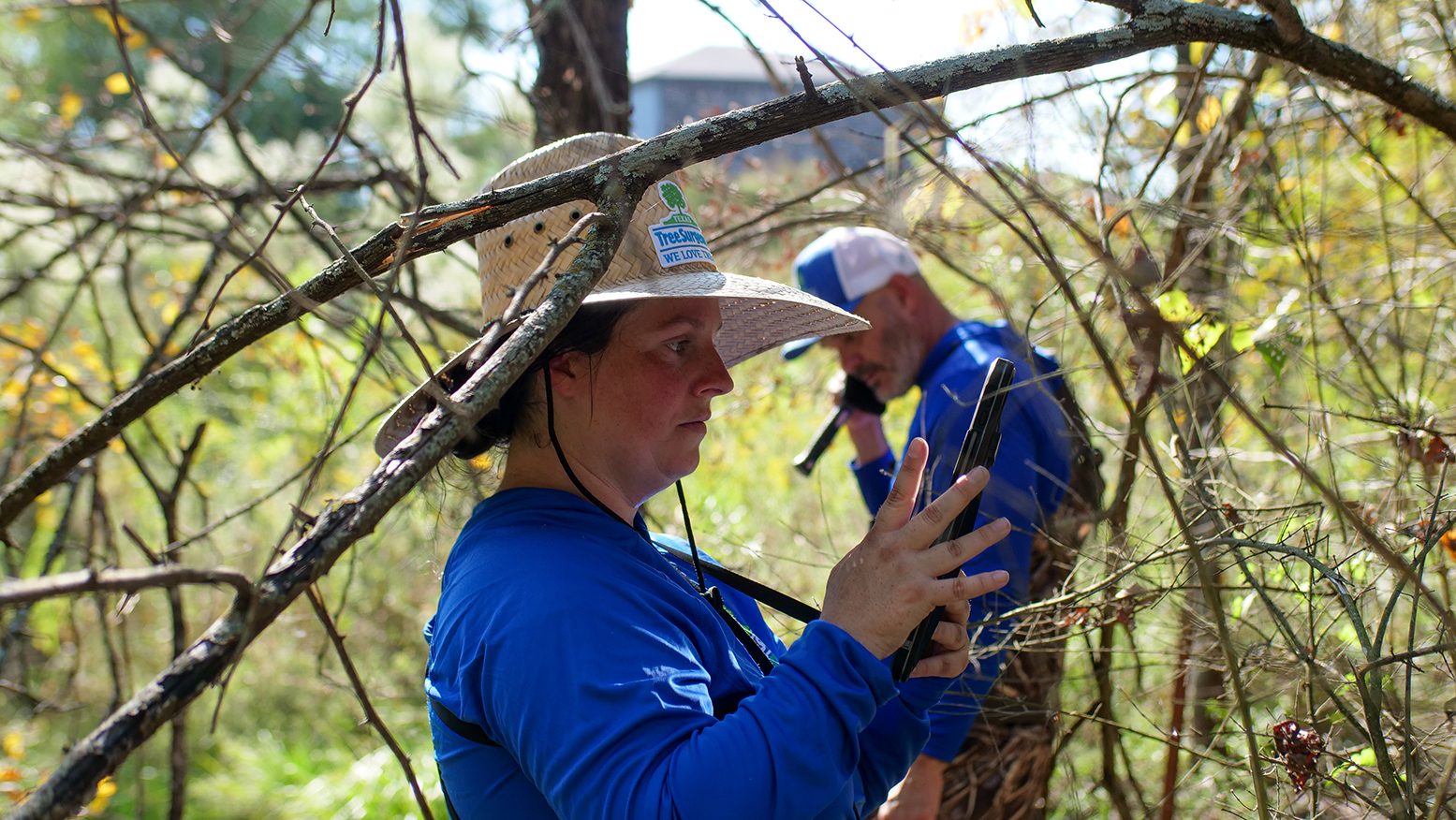Ask Texas Tree Surgeons: My Tree is Leaning; Should I Be Worried?

Another installment in our series of posts where Texas Tree Surgeons answers your tree questions. Are you having problems with your trees and want to know what’s wrong? Let us know!
We have a tree in the back yard that is leaning. Is there anything we can do to fix it?
Whether you just moved into a new house and noticed one of the trees is leaning, or a tree has suddenly developed a lean, there is one important difference to be aware of: quickly-developed leans and over-time leans.
Leaning Trees: Fast vs. Slow
The main factor that determines whether a tree that leans is a problem or not is how quickly the lean developed:
- Trees that have developed a lean over time usually are not a high risk, and cannot be straightened or corrected.
- Trees, like other plants, are naturally drawn to the sun and away from other trees and structures. (This phenomenon is called “phototropism.”)
- If a tree faces competition for sunlight, it will begin to lean away from its competitors and towards a clear view of the sun.
- As the tree leans, its roots grow out in the opposite direction from the lean to anchor the tree.
- Once the tree has become established with its lean, it will continue to grow that way.
- In some cases, a tree that was leaning can begin to send new growth vertically upward again, once the competition for sunlight is removed, but the leaning parts will remain.
- Trees that develop a lean quickly can be an increased fall risk.
- Whether the tree is large or small, developing a lean quickly usually means one thing: root system instability.
- A tell-tale sign of a root issue causing a lean is raised ground around the tree or disturbance to nearby structures or fences.
- High-limestone and shallow soils, like we have in much of North Texas, can be a contributing factor to shallow roots which can lead to instability.
- Additionally, periods of drought and flooding cause shifts in the soil, further hampering proper root formation.
- Root rot, often caused by fungus, can cause widespread root system death, leading to major structural instability.
- If there has been construction around the tree and roots have been cut, or the tree suffered storm damage, a lean can be a sign of an imminent fall.
- Whether the tree is large or small, developing a lean quickly usually means one thing: root system instability.
What Can I do About a Leaning Tree?
If the tree has grown into a lean over time, there is little that can be done. Once the tree is established and stable in its leaning orientation, trying to straighten it can destabilize the structure and put the tree at risk of falling.
For a sudden lean, however, it is important to act quickly. Whatever the cause of the lean, it must be addressed before it becomes worse and the tree falls. In some small trees, a sudden lean can be corrected, allowing the tree to grow new stabilizing roots. In large trees however, complete removal is often the only safe way to deal with a sudden lean. If the tree is leaning from storm or other damage, especially when roots have been cut, rope off the area under the tree and contact a certified arborist immediately — the tree could fall at any time.
At Texas Tree Surgeons, we love trees and we love our customers! If you notice that one of your trees in leaning, we are always happy to come out an see what may be causing the lean and whether it needs to be addressed. If you are aware of a tree that has developed a sudden lean, contact us today so that one of our ISA Tree Risk Assessment Qualified arborists can properly evaluate the danger of the situation and provide a solution.
Related Blogs
Similar blogs related to this topic


Top 10 Things We'd Tell You as an Arborist if We Weren't Afraid of Hurting Your Feelings
This is a list of tree care worst practices that you, or someone you know may be guilty of. Read the following list at your own risk. You’ve been warned, feelings may get hurt. 1.…
Read more

Avoid These Tree Care Mistakes for a Healthy Landscape
Below is a list of overlooked mistakes that could jeopardize the health of your trees. From missteps in pruning to incorrect watering practices, discover how to give your trees the care they deserve. Red oak…
Read more

Why do Arborists Recommend Soil Sampling in Urban Areas like Dallas?
Soil sampling is a crucial practice in urban areas like Dallas. It helps arborists make informed decisions about your landscape to ensure a healthy urban ecosystem. Our native soils vary widely—from the dense clays of…
Read more
